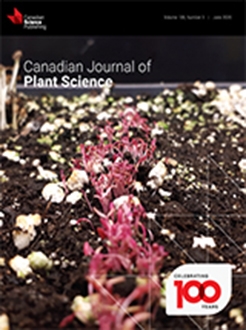Greenhouse floriculture operations pose significant environmental risk due to extensive inputs of fertilizer, especially nitrogen and phosphorus (P). Recent evidence shows that the use efficiency for nitrogen or sulphur is markedly improved in subirrigated potted chrysanthemums (Chrysanthemum morifolium Ramat.) by supplying a moderate level of the nutrient during vegetative growth, and removing the entire nutrient suite at the onset of reproductive growth, without adverse effects on plant quality. Here, two split-plot experiments were conducted with subirrigated, potted, disbudded chrysanthemums grown in a peat:perlite mixture under greenhouse conditions (high- or low-ambient light) with inorganic orthophosphate (Pi) treatment (2.6 mmol L-1 Pi supplied during the vegetative and reproductive stages, and 2.6, 1.95, or 1.3 mmol L-1 Pi supplied during the vegetative stage only) as the main plot and cultivar (‘Olympia’ and ‘Covington’) as the subplot. Market quality plants with sufficient tissue P were produced even when Pi delivery was reduced by approximately 75% over the crop cycle, compared with industry standards. The primary mechanism for sustaining plant growth with decreasing Pi delivery was improved acquisition or uptake efficiency, although some changes in internal P-utilization efficiency were evident, including the remobilization of both organic P and Pi during inflorescence development. Differences in biomass yields, tissue P concentrations, content-based P-use efficiency (PUEC = mg shoot dry mass/mg shoot P content) with constant Pi acquisition, and uptake- versus remobilization-based P supply for inflorescence growth established that ‘Olympia’ has a greater P-utilization efficiency than ‘Covington’. This modified subirrigation practice could contribute significantly to low-input production of floricultural crops.
How to translate text using browser tools
13 November 2019
Strategic timing and rate of phosphorus fertilization improves phosphorus-use efficiency in two contrasting cultivars of subirrigated greenhouse-grown chrysanthemum
Barry J. Shelp,
William J. Sutton,
Edward J. Flaherty
ACCESS THE FULL ARTICLE
It is not available for individual sale.
This article is only available to subscribers.
It is not available for individual sale.
It is not available for individual sale.

Canadian Journal of Plant Science
Vol. 100 • No. 3
June 2020
Vol. 100 • No. 3
June 2020
chrysanthemum
greenhouse floriculture
phosphorus management
phosphorus-acquisition efficiency
phosphorus-utilization efficiency
remobilization




